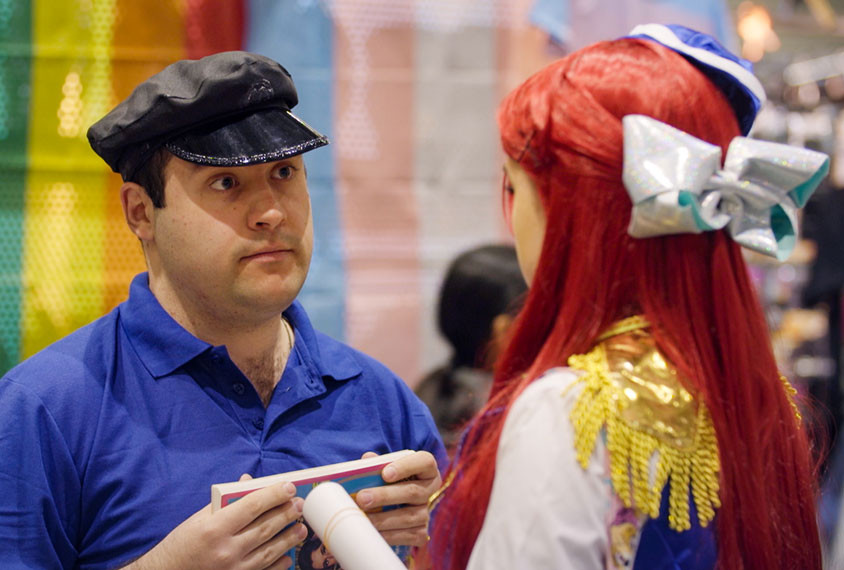Reality dating shows have always captivated audiences, sparking curiosity about the intimate lives of contestants. Shows like “Love Island” often leave viewers wondering about the boundaries of on-screen romance and physical intimacy. But beyond the sun-soaked villas and manufactured drama, real-life relationships and the nuances of intimacy are far more complex and diverse. This brings us to consider deeper questions about love, connection, and societal perceptions, particularly when we look beyond the neurotypical narrative often presented in mainstream media. The Netflix series “Love on the Spectrum” offers a different lens, inviting us to explore the world of dating and relationships for autistic individuals, and in doing so, challenges many preconceived notions about love, intimacy, and connection itself.
One of the refreshing aspects of “Love on the Spectrum” is its departure from typical reality TV tropes. Unlike shows designed for dramatic eliminations and manufactured conflicts, “Love on the Spectrum” gently follows the journeys of several autistic individuals navigating the complexities of dating and forming relationships. There are no eliminations, no forced drama – just genuine individuals exploring connection, sometimes for the very first time. While the show has been praised for its kind intentions, it’s also sparked important conversations about representation, the advice given to those seeking relationships, and the broader understanding of autism and intimacy.
 Promotional image for Love on the Spectrum featuring cast members.
Promotional image for Love on the Spectrum featuring cast members.
Unrealistic Expectations and Misinformation
One critique of “Love on the Spectrum” stems from its occasional presentation of potentially misleading information. In one instance, a participant states that only 5% of autistic people find love, a statement the show doesn’t challenge. This statistic, while likely derived from a study about marriage rates in autistic adults, is a vast oversimplification and doesn’t accurately reflect the diverse experiences of autistic individuals in the realm of relationships and intimacy. It’s crucial to understand that data on autistic adults and relationships is still limited, and broad generalizations can be harmful. Attributing a low percentage to autistic individuals finding “love” not only lacks empirical backing but also perpetuates negative stereotypes about autistic people and their capacity for connection.
Furthermore, focusing solely on marriage rates as a metric for successful relationships is inherently flawed. Many people, neurotypical or neurodivergent, find fulfilling and loving relationships outside of marriage. The original study cited by the show, focusing on marriage rates in mid-life autistic adults, doesn’t capture the full picture of dating, romantic experiences, or even sexual relationships within the autistic community. To suggest that only a small fraction of autistic people experience love is not only inaccurate but also deeply disheartening.
Infantilization and Outdated Advice
Another significant issue raised by critics is the show’s tendency towards infantilization and the often-ineffective advice offered to participants. The show features more interviews with parents than with the autistic individuals themselves, sometimes framing autistic adults as perpetual children in need of constant parental guidance. This approach undermines the agency and autonomy of autistic individuals and reinforces harmful stereotypes about their capabilities.
Moreover, the relationship advice provided on the show often relies on outdated and superficial notions of neurotypical social norms. Coaches emphasize behaviors like forced eye contact, rehearsed gestures, and suppressing personal interests in favor of appearing “normal.” This approach not only feels inauthentic but also misses the point of genuine connection. True relationships are built on mutual understanding, acceptance, and genuine interest, not on performing neurotypicality. Forcing autistic individuals to mask their natural behaviors to fit neurotypical expectations is not only exhausting but also counterproductive to forming meaningful connections.
 Image of Sharnae and Jimmy from Love on the Spectrum, an autistic couple.
Image of Sharnae and Jimmy from Love on the Spectrum, an autistic couple.
The show’s awkward and intrusive question to an autistic couple about whether they had “consummated their relationship” further exemplifies this infantilizing tendency. Treating adults in their twenties, who are moving in together, as if their sexual lives are a matter of public or parental concern is both bizarre and disrespectful. It reinforces the misconception that autistic people are somehow asexual or incapable of healthy sexual relationships, a notion that is demonstrably false. Autistic people, like everyone else, experience a full range of human emotions and desires, including sexual attraction and intimacy.
Embracing Neurodiversity and Authentic Connection
Despite its flaws, “Love on the Spectrum” does offer glimpses of genuine connection and acceptance that are truly heartwarming. The successful relationships featured on the show highlight the importance of embracing neurodiversity and valuing authentic interactions over forced conformity. Moments where couples accept and accommodate each other’s autistic traits, like the example of Jimmy needing navy blue socks, showcase the beauty of neurodivergent relationships. These moments emphasize that love and connection thrive on understanding, acceptance, and mutual respect for individual differences.
The show also deserves credit for its positive portrayal of LGBTQ+ relationships within the autistic community. Chloe’s open exploration of dating both men and women is presented as a স্বাভাবিক aspect of her identity, reflecting the reality that autistic individuals are significantly more likely to identify as LGBTQ+ than neurotypical individuals. This inclusive representation is crucial and contributes to a more nuanced and accurate portrayal of the autistic experience.
 Chloe and Lotus on a date, featured in Love on the Spectrum.
Chloe and Lotus on a date, featured in Love on the Spectrum.
Beyond “Love Island” and Stereotypes: Real Love on the Spectrum
While “Love on the Spectrum” may not be a perfect guide to dating or a comprehensive representation of autism, it opens up important conversations about love, relationships, and intimacy beyond the narrow confines of mainstream reality TV. It challenges viewers to reconsider their assumptions about who is capable of love and connection, and in what forms those connections can thrive. Moving beyond the sensationalism of shows like “Love Island” and the often-stereotypical portrayals of autism in media, “Love on the Spectrum” at its best, offers a glimpse into the diverse and beautiful ways love and intimacy can manifest in the neurodivergent community. Ultimately, fostering genuine connection requires moving away from forced behaviors and embracing the authenticity and unique strengths of each individual, regardless of their neurotype.

